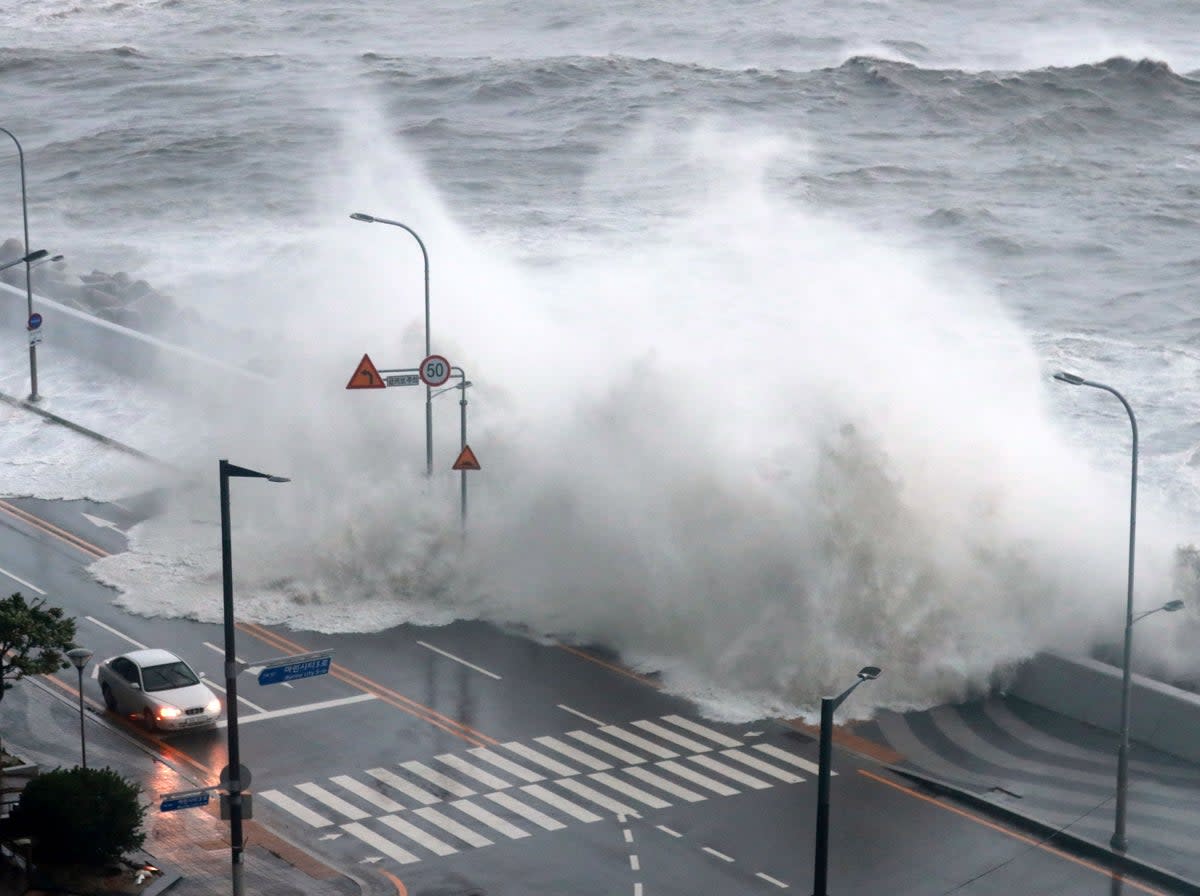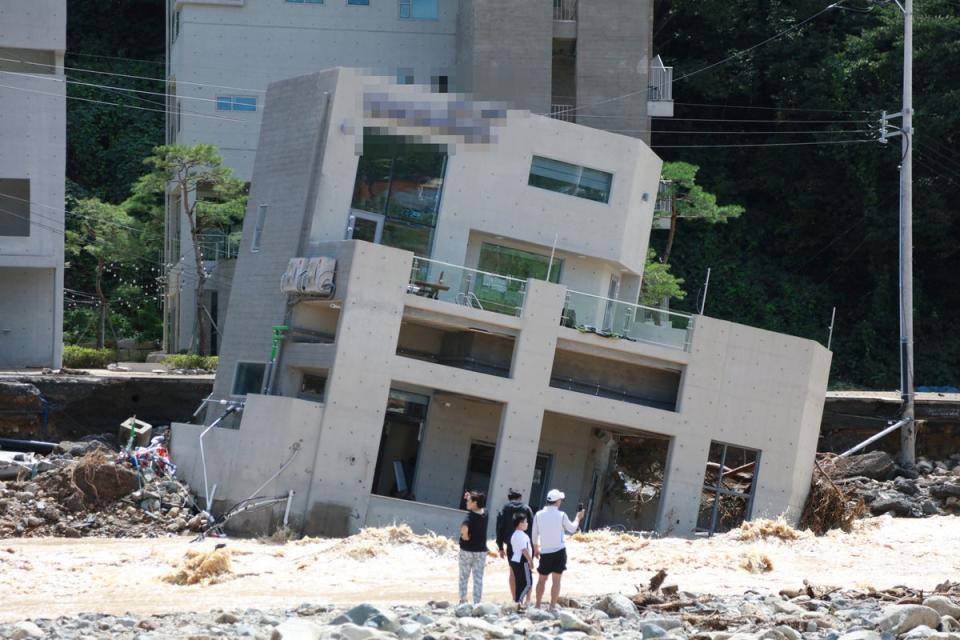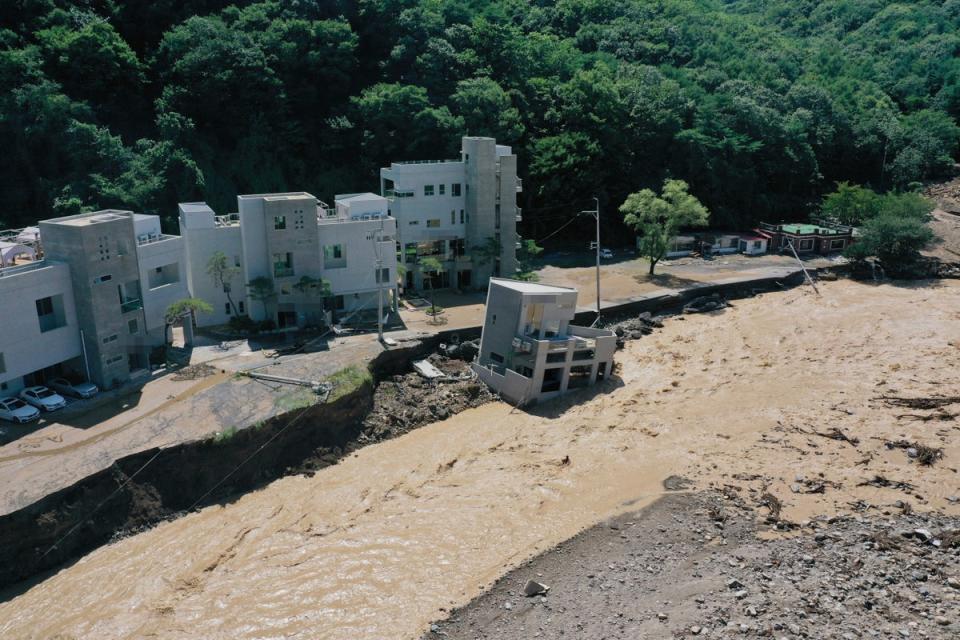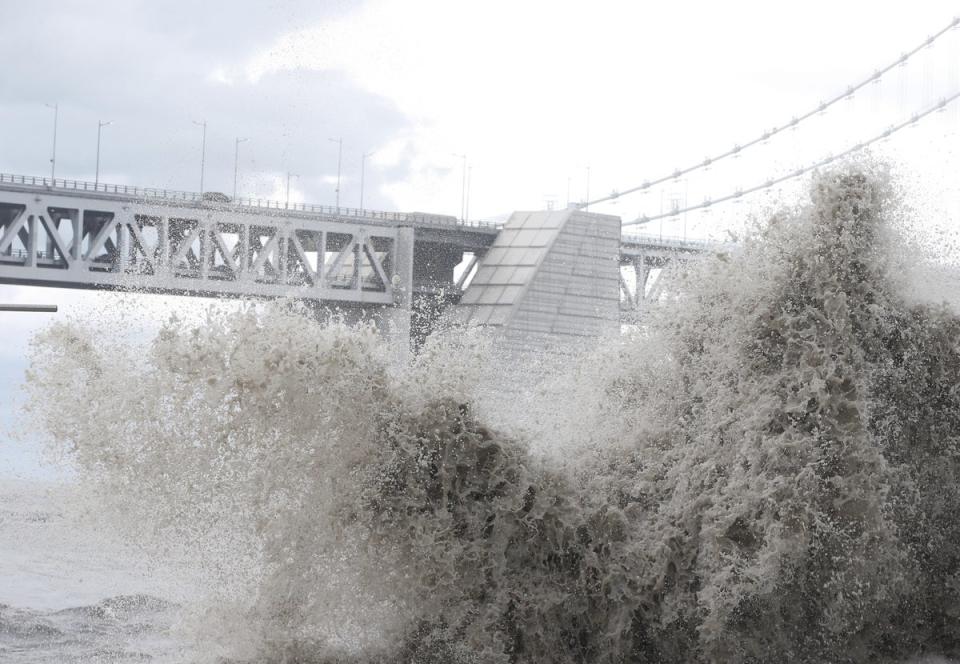Typhoon Hinnamnor: Most powerful typhoon to hit South Korea in years destroys roads and power lines

The strongest global cyclonic storm this year has barrelled through South Korea, causing widespread to roads and homes – but spared the country from more extensive destruction due to the combined effect of advanced evacuation preparations and the storm weakening at sea.
Three people have died, while 10 were missing and thousands were displaced by typhoon Hinnamnor as of Tuesday afternoon, according to authorities.
The typhoon has also sparked a fire at a steel plant.
The government had put the country on alert about potential damage from flooding, landslides and tidal waves as it braced its second major storm in recent weeks.
Typhoon Hinnanmor made landfall in South Korea as one of the nation’s strongest storms on record on Tuesday and weekened to 115kmph, unleashing fierce rains and winds that destroyed trees and roads.
More than 66,000 homes were left without electricity after high-speed winds with gushing water damaged power lines and toppled electricity poles.
The country’s southeastern industrial cities of Pohang, Gyeongju and Ulsan suffered the most severe damage before Hinnamnor left the Korean peninsula and moved to Japan.
Pohang, a city of about 500,000 people north of Busan, appeared to be the worst affected. A woman in her 70s was killed after being swept away in gushing waters, while another woman in her 60s was found dead in a submerged basement parking lot.
Eight others were reported missing from the same underground parking lot that was submerged in water, said the Ministry of Interior and Safety.
In neighboring Gyeongju city, another woman in her 80s died after her home collapsed in a landslide.
In Ulsan, a 25-year-old man remained missing after he was swept away in a rain-swollen stream, according to the ministry.

The death toll from the cyclone is expected to rise as rescue operations continue, with the military mobilising amphibious vehicles.
South Korean prime minister Han Duk-soo said Hinnamnor was a “historically strong typhoon that we never experienced before” as he called for proactive efforts to evacuate residents in areas vulnerable to flooding.
Local broadcasters showed footage of high tides whipped up by the typhoon crashing onto a road in Pohang and a wrecked car being pulled out of a submerged underground apartment garage.
Images on social media from one of the worst affected regions in the eastern coastal city showed landslides and rushing water overwhelming roads.
“I woke up at 5 am at because of the explosive rain, and I got really concerned because the water rose right up to my doorway,” Kim Seong-chang, a Pohang resident, said in an interview to South Korean network JTBC.
“The water was still thigh-high at 7am and those who parked their cars in the streets were in panic because their vehicles were submerged. Other residents were bucketing out water from their homes.”

Parts of the city recorded wind speeds of up to 72mph as the storm dumped a total of 20 inches of rain through the morning, according to a city official.
Experts, however, have said South Korea was spared worse damage because of advanced efforts on evacuation. Earlier, president Yoon Suk-yeol had faced widespread criticism after flooding in capital Seoul last month killed at least 14 people.
As precautionary measures, more than 600 schools were closed or migrated online. More than 250 flights and 70 ferry services were grounded while more than 66,000 fishing boats were evacuated to ports.

Workers by late morning managed to restore electricity to 30,006 of the 66,341 households that lost power.
The weather agency said the typhoon was expected to be downgraded to a tropical cyclone by night as it moves northeast between Russia and the northern Japanese island of Hokkaido, the agency said.
Bracing for the typhoon, Japanese authorities said Hokkaido will face high winds and waves overnight and on Wednesday.
Authorities cancelled train and flight services on the southernmost island of Kyushu when the typhoon passed earlier on Tuesday.
Neighbouring North Korea has also braced for damage, with leader Kim Jong-un holding a two-day meeting on disaster prevention work and releasing water from a dam near its border with South Korea – much to its dismay.
The South has requested North Korea to give advance notice before it releases water from the dam as it could cause flooding.
Additional reporting by agencies

